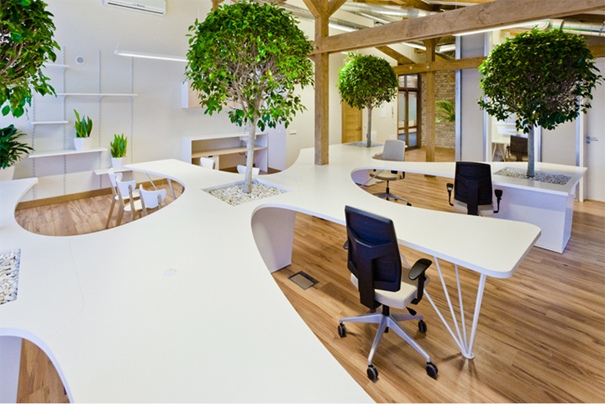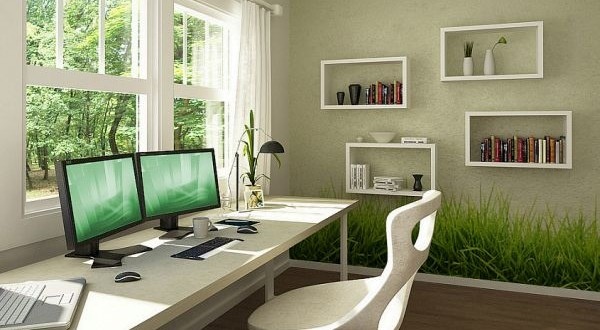Sustainable Office Design for a Green Tomorrow
In recent years, the adverse effects of the changing climate on the environment are being given more attention in the field of office design. Some researches even show a correlation between sustainable work spaces and a more efficient work environment. Investing in ‘green’ offices is a growing trend, since employers have come to realize that this investment pays off in the long run. If you are having trouble with low productivity and high productivity costs, maybe you should try the following ‘green’ tactics.
Let there be daylight
If your office relies more on daylight and less on artificial light, you will save up on electricity. There is also a clear connection with productivity. Employees who are exposed to daylight work better, concentrate more easily, and sleep 46 minutes more each night than those who work under artificial lights. With the development of new technologies, even office spaces that are located inside a building, with no windows, can get natural light with clever devices that redirect sunlight.
Image Source: Millennium Painters & Decorators
Bring the real green in
In addition to providing natural light, windows also provide views of trees and parks outside. Looking at nature and plants increases the ability to concentrate. If your office has no windows, or the windows are there but the greenery is missing, place plants around the office to help raise productivity. Plants also provide cleaner air and increase the flow of oxygen. Researches show that even a photo of a plant produces the same effect as a real plant.
Conserve computer energy
It is estimated that over $1 billion in electricity is wasted annually due to the use of energy inefficient computers. Conserve energy and save money on electricity bills by investing in Energy Star labelled computers. Also, set the computers to energy-saving mode: make monitor and display turn off after 15 minutes of inactivity, and set the system standby to activate after 30 minutes. Screensavers do not save energy, so avoid them. Make sure the employees turn off their computers and all peripherals when leaving work. Unplug power adapters and battery chargers when not in use.
Comparing different energy providers through Business Energy Comparison can also help offices find cost-effective and sustainable energy solutions.
Green commuting
The location matters as much as your office interior design. If employees were enabled to walk, bike, or take public transport to work, instead of driving, that would decrease the emission of carbon dioxide gases into the air. By choosing office space at an easily accessible location, you will be doing a favour to both Mother Earth and your workers. Workers who bike or walk to work are happier and less exposed to traffic-jam related stress, and thus less likely to get sick.
Image Source: Pinterest
Maintain healthy airflow
Air quality makes a huge difference. People spend over 80% of their time indoors, and most of it at work. Harsh chemicals and air contaminants make people sleepier and jeopardize their health. A well ventilated office space is likely to improve employees’ performance by 6% to 9%. Encourage your cleaning staff to use non-toxic cleaning products, and water-dampened cloths when wiping dust. Open the windows to increase air flow, or install a central ventilation system. Forbid smoking in or near the offices. Use air purifiers to eliminate contaminants.
Recycle
Almost anything in the office can be recycled, from copy paper, envelopes, and cardboard boxes, to computer monitors, and ink cartridges. Encourage your employees to recycle as well. Place bins in the lunch area for organic waste and plastic and tin containers, and post clear guidelines above them.
How do you handle productivity issues? What sustainable measures do you take in your work environment?
—————–
Author’s Bio: Lana Hawkins is an architecture student from Sydney, Australia. She loves writing about interior design and she does it regularly for Smooth Decorator. Lana finds most of her inspiration in green architecture and sustainability.






